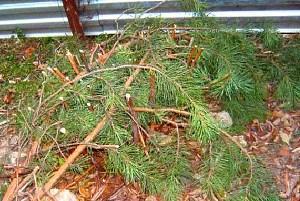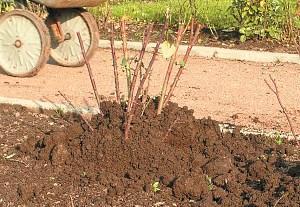How to cover roses for the winter?
 Rose refers to plants that require care and attention not only during the flowering period, but also in preparation for winter. Rose is a moderately hardy plant that is afraid of a drop in temperature. It should be remembered that this culture can die not so much from frost as from improper preparation in the summer-autumn period.
Rose refers to plants that require care and attention not only during the flowering period, but also in preparation for winter. Rose is a moderately hardy plant that is afraid of a drop in temperature. It should be remembered that this culture can die not so much from frost as from improper preparation in the summer-autumn period.
When starting to prepare a rose for winter, questions often arise: when should you start hiding a rose for the winter? is it worth pruning? what materials to use for shelter?
In the climatic conditions of Russia, roses can winter successfully if they were provided with competent care in the spring-summer period. And in the fall, with the onset of the first frost, simple measures were taken in a timely manner.
You need to start preparing a rose for wintering from the summer.
In July, they completely stop feeding the culture with nitrogen, due to the fact that an excess of it in the stems of the rose negatively affects the ripening of the wood, and even with a slight frost leads to their death.

Experienced growers resort to another simple but effective way to ripen a rose bush. When removing dried flowers at the end of summer, it is necessary to leave 1-2 ovaries for the formation of the fruit. It is very beneficial for the ripening of the rose. Giving all the vitality for the ripening of the fruit, the plant prepares itself for winter sleep. The wood fully matures, the amount of moisture in it is significantly reduced.
To start sheltering a rose only when persistent cold weather sets in up to 5aboutC. Begin by lightly pruning all buds and ovaries and removing all leaves, thereby reducing the area for moisture to evaporate from the plant.
 It is also necessary to carry out this simple operation so that inflorescences and leaves do not become centers of the spread of fungal diseases under winter shelter, which can lead to the death of the entire plant. For preventive purposes, the stems of the plant and the soil under it, it does not hurt to treat it with iron sulfate, as a rule, with a 5% solution.
It is also necessary to carry out this simple operation so that inflorescences and leaves do not become centers of the spread of fungal diseases under winter shelter, which can lead to the death of the entire plant. For preventive purposes, the stems of the plant and the soil under it, it does not hurt to treat it with iron sulfate, as a rule, with a 5% solution.
After finishing the pruning and processing the bush, proceed directly to the shelter. For this you will need:
- compost;
- garden land;
- wood or wire studs;
- coniferous spruce branches;
- dry foliage;
- boxes.
Carrying out activities for sheltering roses for the winter is carried out in stages. At the onset of frost up to -5aboutThey huddle from a bush, or rather pour a hill of rotted compost or earth up to 25 cm high under the root.
Further, with the onset of stable frosts down to -10aboutC, sprinkle dry foliage on the mound and cover with spruce or pine spruce branches.
Roses should not be covered with manure, hay, straw. They quickly get wet and retain moisture, which leads to the death of the bush.
 And finally, snow is the topmost and most reliable layer of cover. Moreover, the more it is, the better. If the winter is with little snow, then you will have to add snow on your own. In frost -30 aboutWith and the thickness of the snow cover up to 60 cm, the temperature near the earth's surface will be -5 aboutC, which is the optimal temperature for a rose in winter.
And finally, snow is the topmost and most reliable layer of cover. Moreover, the more it is, the better. If the winter is with little snow, then you will have to add snow on your own. In frost -30 aboutWith and the thickness of the snow cover up to 60 cm, the temperature near the earth's surface will be -5 aboutC, which is the optimal temperature for a rose in winter.
For other types of roses, for example climbing, the technology of the shelter is slightly different from the previous one in that after removing the stems from the supports, they are pinned to the ground, and then they are sheltered in the same order as indicated above.
Groundcover, miniature and polyanthus roses are covered with boxes, which are lined with spruce branches, and then covered with snow.
Good advice. I approximately do everything as described in the article. I do not spray only with iron vitriol. But this is a good idea, for preventive purposes, I think it will not hurt. And I also liked the advice that for a rose to ripen, you need to leave a few ovaries that will pull the juice. Of course, this will help the rose ripen faster. I will definitely try it next year. Dear readers, maybe someone knows other good ways to hide roses for the winter? Please share.